STM32H743I-EVAL: Specifications, Features and Applications
STM32H743XIH6 EVAL BRD
The STM32H743I-EVAL offers 480 MHz Cortex-M7 power, 2 MB flash, 1 MB RAM, and low power consumption, making it ideal for embedded projects in 2025.
Product Introduction
The STM32H743I-EVAL delivers unmatched performance for embedded developers striving to push boundaries in 2025. Powered by a 32-bit Arm® Cortex®-M7 core clocked at 480 MHz, it achieves a remarkable 1027 DMIPS, ensuring smooth execution of demanding tasks. With up to 2 Mbytes of flash memory and 1 Mbyte of RAM, including 192 Kbytes of TCM RAM, you gain ample resources for complex applications. Its low standby power consumption of just 2.95 µA makes it ideal for energy-sensitive projects. Additionally, support for 35 communication peripherals ensures seamless connectivity across diverse embedded systems.
Overview of STM32H743I-EVAL
The STM32H743I-EVAL stands out as a comprehensive evaluation board tailored for embedded developers. Its design integrates cutting-edge technology, offering a robust platform for prototyping and testing advanced applications. Whether you're working on industrial automation, IoT devices, or multimedia systems, this board provides the tools you need to succeed.
Key Specifications
The STM32H743I-EVAL boasts an impressive array of technical specifications that cater to diverse development needs. Here's a detailed breakdown:
| Feature | Description |
|---|---|
| Microcontroller | Arm® Cortex®-M7-based STM32H743XI and STM32H753XI |
| Debugger/Programmer | Embedded ST-LINK |
| USB Interfaces | USB OTG_HS and FS |
| Networking | Ethernet |
| Communication Interfaces | FD-CAN, USART |
| Audio | Audio DAC and ADC, digital microphone |
| Memory | SRAM, SDRAM, NOR Flash memory, Twin Quad-SPI Flash memory, microSD™ 3.0 |
| Display | 5.7” 640×480 TFT color LCD with touchscreen |
| Cryptographic Hardware Accelerator | Available only on STM32H753XI devices |
| Expansion Connectors | Provide easy addition of specialized features |
| ETM Trace Support | Supported through external probes |
These specifications highlight the STM32H743I-EVAL's versatility and capability to handle complex embedded systems. The inclusion of advanced memory options, high-speed USB interfaces, and a vibrant touchscreen display ensures you have the resources to bring your ideas to life.
Unique Features
What sets the STM32H743I-EVAL apart from other evaluation boards is its combination of performance, usability, and expandability. Here's how it compares to similar boards:
| Feature | STM32H743I-EVAL | Similar Boards |
|---|---|---|
| Microcontroller | STM32H743XI | Varies |
| Flash Memory | 2 Mbytes | Varies |
| RAM | 1 Mbyte | Varies |
| LCD | 5.7” 640×480 TFT with touchscreen | Varies |
| Ethernet | Yes, IEEE-802.3-2002 compliant | Varies |
| USB OTG | HS and FS | Varies |
| Audio DAC | Yes | Varies |
| Cryptographic Accelerator | Available on STM32H753XI | Not always available |
| Expansion Connectors | Yes | Varies |
| Debugger/Programmer | On-board ST-LINK | Varies |
The STM32H743I-EVAL excels in areas like memory capacity, display quality, and connectivity options. Its cryptographic hardware accelerator, available on the STM32H753XI variant, adds an extra layer of security for sensitive applications. Additionally, the on-board ST-LINK debugger simplifies the development process, saving you time and effort.
By combining these unique features with its robust specifications, the STM32H743I-EVAL provides a reliable and powerful platform for embedded development. Whether you're a seasoned developer or just starting, this board equips you with the tools to innovate and succeed.
Performance Analysis of STM32H743I-EVAL
Processing Power
The STM32H743I-EVAL delivers exceptional processing power, making it a standout choice for demanding embedded applications. At its core, the board features a 32-bit Arm® Cortex®-M7 processor running at 480 MHz. This high clock speed, combined with advanced architectural optimizations, enables the board to achieve an impressive 1027 DMIPS and a CoreMark score of 2424. These benchmarks highlight its ability to handle complex computations and real-time tasks with ease.
To further illustrate its capabilities, consider the following performance metrics:
| Evidence Description | Details |
|---|---|
| EEMBC CoreMark | Measures microcontroller performance, showcasing the STM32H745 device's capabilities. |
| Graphic Effect Module | Demonstrates real-time rendering at full screen resolution, emphasizing processing power. |
| Screen Saver Module | Displays a rotating clock using intensive CPU calculations, highlighting CPU performance. |
The STM32H743I-EVAL also includes 16 Kbytes of both instruction and data caches, ensuring efficient memory access and faster execution of tasks. Whether you're developing industrial automation systems or multimedia applications, this board provides the computational muscle you need to succeed.
Power Efficiency
While the STM32H743I-EVAL excels in processing power, it also prioritizes energy efficiency. This balance makes it suitable for applications where power consumption is a critical factor. In run mode, the board achieves a power efficiency of 275 µA/MHz at 3.3 V and 25 °C. Its standby current is as low as 2.43 µA, and in VBAT mode, it consumes just 460 nA. These figures demonstrate its ability to operate efficiently, even in energy-sensitive environments.
Here's a comparison of power consumption benchmarks:
| Metric | Value |
|---|---|
| CPU Frequency | 480 MHz |
| CoreMark | 2424 |
| DMIPS | 1027 |
| L1 Cache | 16 Kbytes I-cache + 16 Kbytes D-cache |
| Power Efficiency (Run mode) | 275 µA/MHz @ 3.3 V, 25 °C |
| Standby Current | 2.43 µA |
| VBAT mode Current | 460 nA |
Additionally, the STM32H743I-EVAL outperforms many competing boards in idle and inference power consumption. This efficiency ensures that your projects can run longer on limited power sources, such as batteries, without compromising performance.
By combining robust processing power with exceptional energy efficiency, the STM32H743I-EVAL provides a reliable platform for a wide range of embedded applications. Whether you're designing IoT devices or portable systems, this board ensures optimal performance without draining resources.
Usability of STM32H743I-EVAL for Developers
Development Tools
When you work with the STM32H743I-EVAL, you gain access to a suite of development tools designed to streamline your workflow. The board supports popular Integrated Development Environments (IDEs) such as STM32CubeIDE, Keil MDK, and IAR Embedded Workbench. These IDEs offer comprehensive debugging and code optimization features, ensuring you can efficiently develop and test your applications.
Tip: Utilize the STM32CubeMX tool to configure your microcontroller's peripherals and generate initialization code. This tool simplifies the setup process, allowing you to focus on application logic rather than hardware configuration.
The STM32H743I-EVAL also includes an on-board ST-LINK debugger/programmer. This feature eliminates the need for external debugging hardware, saving you time and reducing setup complexity. With these tools, you can quickly identify and resolve issues, enhancing your development efficiency.
Ease of Prototyping
Prototyping with the STM32H743I-EVAL is straightforward, thanks to its user-friendly design. The board features multiple expansion connectors, allowing you to easily integrate additional modules and sensors. This flexibility enables you to tailor the board to your specific project requirements without extensive modifications.
The 5.7” TFT color LCD with touchscreen capability provides an intuitive interface for testing user interactions. You can rapidly develop and iterate on your designs, ensuring your final product meets user expectations. Additionally, the board's robust connectivity options, including Ethernet and USB interfaces, facilitate seamless communication with other devices and systems.
Note: The STM32H743I-EVAL's comprehensive documentation and community support further enhance your prototyping experience. You can access a wealth of resources and expert advice to overcome any challenges you encounter.
By leveraging these features, you can accelerate your development process and bring your ideas to life with confidence.
Real-World Applications of STM32H743I-EVAL
Use Cases
The STM32H743I-EVAL has proven its versatility across a wide range of industries. Its robust features and high performance make it suitable for applications that demand precision and reliability. Here are some common use cases where this evaluation board excels:
Industrial Automation: The board's powerful processing capabilities and extensive connectivity options enable seamless integration into factory automation systems. You can use it to control robotic arms, monitor sensors, or manage complex workflows.
IoT Devices: With its low power consumption and advanced communication interfaces, the STM32H743I-EVAL is ideal for IoT applications. It supports real-time data collection and transmission, making it perfect for smart home devices or environmental monitoring systems.
Multimedia Systems: The 5.7” TFT touchscreen and audio capabilities allow you to develop interactive multimedia applications. Whether you're creating a user interface for a kiosk or a portable media player, this board provides the tools you need.
Medical Devices: The board's cryptographic hardware accelerator ensures secure data handling, which is crucial for medical applications. You can rely on it to develop devices like patient monitoring systems or portable diagnostic tools.
Pro Tip: When designing for these use cases, leverage the board's expansion connectors to add specialized modules or sensors tailored to your project.
Developer Feedback
Developers who have worked with the STM32H743I-EVAL often praise its reliability and ease of use. Many highlight the seamless integration with popular development tools like STM32CubeIDE and the convenience of the on-board ST-LINK debugger. These features simplify the development process, allowing you to focus on innovation rather than troubleshooting.
One developer shared, "The STM32H743I-EVAL has been a game-changer for our IoT projects. Its low power consumption and robust connectivity options have significantly reduced our development time." Another noted the board's excellent documentation and community support, which helped them overcome challenges quickly.
The vibrant touchscreen display and advanced audio features also receive positive feedback. Developers appreciate how these features enable rapid prototyping of user interfaces and multimedia applications. Overall, the STM32H743I-EVAL has earned a reputation as a reliable and versatile tool for embedded development.
Comparing STM32H743I-EVAL with Alternatives
Competing Evaluation Boards
When exploring evaluation boards, you will find several alternatives to the STM32H743I-EVAL. Boards like the NXP i.MX RT1170 and Texas Instruments TMS320F28388D offer competitive features. However, each has its strengths and limitations. For instance, the NXP i.MX RT1170 excels in multimedia applications but lacks the same level of real-time task capability. Similarly, the TMS320F28388D is optimized for motor control but falls short in connectivity options.
Here’s a quick comparison of key features:
| Feature | STM32H743IIT6 | Alternatives |
|---|---|---|
| Real-time task capability | Yes | Varies |
| Supported protocols | CAN, Ethernet, Modbus, Profibus | Varies |
| Audio processing support | MP3, AAC, FLAC | Varies |
| Connectivity options | Ethernet, USB, SDIO, Wireless | Varies |
| DSP and DP-FPU integration | Yes | Varies |
This table highlights how the STM32H743I-EVAL stands out in areas like protocol support, audio processing, and connectivity. These features make it a versatile choice for a wide range of applications.
Advantages of STM32H743I-EVAL
The STM32H743I-EVAL offers several advantages over competing boards. Its ability to handle real-time tasks ensures reliable performance in critical applications like industrial automation and motor control. The integration of a DSP and double-precision floating-point unit enhances its capability to process complex data efficiently. This makes it suitable for audio processing, IoT devices, and smart systems.
You will also appreciate its extensive connectivity options, including Ethernet, USB, and wireless interfaces. These features enable seamless integration with cloud platforms, ensuring secure data transmission through encryption and authentication. Additionally, the board supports advanced audio formats like MP3, AAC, and FLAC, making it ideal for multimedia projects.
Tip: If your project requires robust data processing and secure connectivity, the STM32H743I-EVAL provides a reliable and efficient solution.
By combining these advantages with its comprehensive feature set, the STM32H743I-EVAL delivers unmatched versatility and performance for embedded developers.
The STM32H743I-EVAL delivers exceptional performance, usability, and versatility, making it an ideal choice for embedded developers. Its advanced features, including robust processing power and energy efficiency, ensure compatibility with diverse applications. You can rely on its comprehensive ecosystem to streamline development and prototyping. Whether you're building IoT devices or multimedia systems, this evaluation board equips you with the tools to innovate confidently.
Note: Choosing the STM32H743I-EVAL means investing in a reliable platform that meets the demands of modern embedded projects.
FAQ
What makes the STM32H743I-EVAL suitable for beginners?
The STM32H743I-EVAL offers user-friendly tools like STM32CubeIDE and STM32CubeMX. These tools simplify configuration and coding. The on-board ST-LINK debugger eliminates the need for external hardware, making it easier for beginners to start developing without additional setup.
Can the STM32H743I-EVAL handle real-time applications?
Yes, the STM32H743I-EVAL excels in real-time applications. Its 32-bit Arm® Cortex®-M7 processor, running at 480 MHz, ensures reliable performance for time-critical tasks. The board also supports advanced communication protocols like CAN and Ethernet for seamless real-time data exchange.
Is the STM32H743I-EVAL compatible with other development boards?
The STM32H743I-EVAL features expansion connectors that allow integration with other modules and boards. You can easily add specialized components to extend its functionality, making it compatible with a wide range of development ecosystems.
How does the STM32H743I-EVAL support secure applications?
The STM32H743I-EVAL includes a cryptographic hardware accelerator (available on STM32H753XI variants). This feature ensures secure data encryption and authentication, making it ideal for applications requiring high levels of security, such as medical devices and IoT systems.
What resources are available for troubleshooting?
You can access extensive documentation, tutorials, and community forums for support. The STM32Cube ecosystem provides detailed guides and examples. Additionally, the on-board ST-LINK debugger simplifies debugging, helping you quickly identify and resolve issues.
Specifications
- TypeParameter
- Mounting Type
The "Mounting Type" in electronic components refers to the method used to attach or connect a component to a circuit board or other substrate, such as through-hole, surface-mount, or panel mount.
Fixed - Series
In electronic components, the "Series" refers to a group of products that share similar characteristics, designs, or functionalities, often produced by the same manufacturer. These components within a series typically have common specifications but may vary in terms of voltage, power, or packaging to meet different application needs. The series name helps identify and differentiate between various product lines within a manufacturer's catalog.
STM32H7 - Part Status
Parts can have many statuses as they progress through the configuration, analysis, review, and approval stages.
Obsolete - Moisture Sensitivity Level (MSL)
Moisture Sensitivity Level (MSL) is a standardized rating that indicates the susceptibility of electronic components, particularly semiconductors, to moisture-induced damage during storage and the soldering process, defining the allowable exposure time to ambient conditions before they require special handling or baking to prevent failures
1 (Unlimited) - TypeMCU 32-Bit
- Core Processor
The term "Core Processor" typically refers to the central processing unit (CPU) of a computer or electronic device. It is the primary component responsible for executing instructions, performing calculations, and managing data within the system. The core processor is often considered the brain of the device, as it controls the overall operation and functionality. It is crucial for determining the speed and performance capabilities of the device, as well as its ability to handle various tasks and applications efficiently. In modern devices, core processors can have multiple cores, allowing for parallel processing and improved multitasking capabilities.
ARM® Cortex®-M7 - Utilized IC / Part
Utilized IC / Part is a parameter that refers to the extent to which an integrated circuit (IC) or electronic component is being used or consumed within a system or application. It typically indicates the percentage or ratio of the component's capabilities that are being utilized in a given scenario. This parameter is important for assessing the efficiency and performance of the component, as well as for determining if the component is being underutilized or overburdened in a particular application. Monitoring and optimizing the utilization of ICs and electronic parts can help improve overall system reliability, efficiency, and cost-effectiveness.
STM32H743XIH6 - Core Architecture
In electronic components, the term "Core Architecture" refers to the fundamental design and structure of the component's internal circuitry. It encompasses the arrangement of key components, such as processors, memory units, and input/output interfaces, within the device. The core architecture plays a crucial role in determining the component's performance, power efficiency, and overall capabilities. Different core architectures are optimized for specific applications and requirements, such as high-speed processing, low power consumption, or specialized functions. Understanding the core architecture of electronic components is essential for engineers and designers to select the most suitable components for their projects.
ARM - ContentsBoard(s), LCD
- Board Type
Board Type refers to the specific configuration or category of a printed circuit board (PCB) used in electronic devices. It defines the characteristics and design of the board, such as single-sided, double-sided, or multilayer constructions. The Board Type impacts factors like signal integrity, power distribution, and thermal management, influencing the overall performance and functionality of the electronic component. Different applications and environments may require specific Board Types to meet durability and operational requirements.
Evaluation Platform - RoHS Status
RoHS means “Restriction of Certain Hazardous Substances” in the “Hazardous Substances Directive” in electrical and electronic equipment.
RoHS Compliant
Datasheet PDF
- Datasheets :
- Design Resources :
 BC557 PNP Transistor: Pinout, Application, and Datasheet
BC557 PNP Transistor: Pinout, Application, and Datasheet28 July 202114496
 1N4004 Rectifier Diode: Pinout, Equivalent and Datasheet
1N4004 Rectifier Diode: Pinout, Equivalent and Datasheet09 July 20216708
 ATxmega64A1U and ATxmega128A1U Microcontrollers: Technical Overview and Specifications
ATxmega64A1U and ATxmega128A1U Microcontrollers: Technical Overview and Specifications29 February 2024109
 UF4007 Fast Recovery Diode: Datasheet, Equivalents and Applications
UF4007 Fast Recovery Diode: Datasheet, Equivalents and Applications24 September 202112529
![1N5407 Diode: Datasheet, Equivalent, 1N5407 vs.1N5408 [Video]](https://res.utmel.com/Images/Article/0db19f75-5fe5-4bd7-a599-a348ffbfb061.jpg) 1N5407 Diode: Datasheet, Equivalent, 1N5407 vs.1N5408 [Video]
1N5407 Diode: Datasheet, Equivalent, 1N5407 vs.1N5408 [Video]22 December 20212709
 STM32F107VCT6 Microcontroller: Features, Applications and Datasheet
STM32F107VCT6 Microcontroller: Features, Applications and Datasheet23 November 2023591
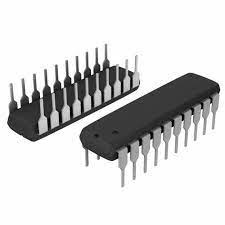 AD7701BNZ ADC: Pinout, Specification, and Datasheet
AD7701BNZ ADC: Pinout, Specification, and Datasheet01 June 2021901
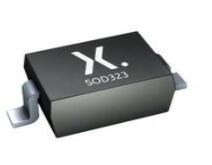 BAS416 Diode: NXP BAS416, 75V, SOD 323, Datasheet PDF
BAS416 Diode: NXP BAS416, 75V, SOD 323, Datasheet PDF17 February 20221299
 Characteristics and Working Principle of IGBT
Characteristics and Working Principle of IGBT31 October 202518551
 How are Integrated Circuits produced?
How are Integrated Circuits produced?20 October 202524537
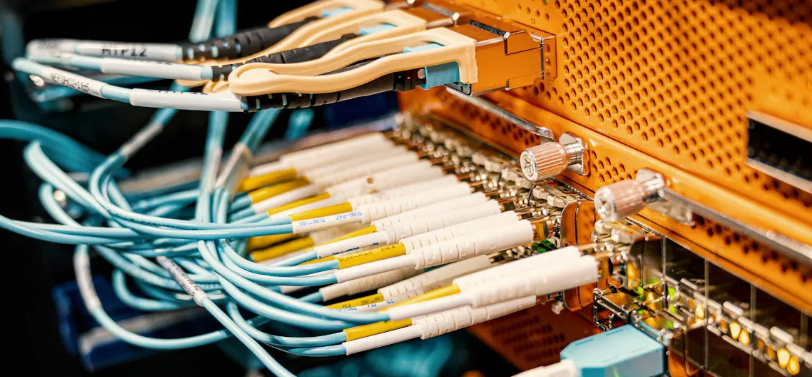 How Top Wire Splice Connector Brands Stack Up This Year
How Top Wire Splice Connector Brands Stack Up This Year10 July 2025844
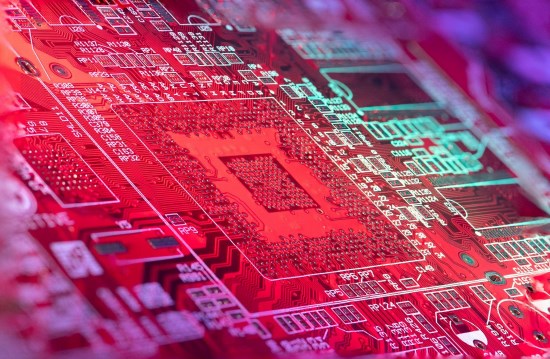 Analyzing the Latest Electronic Components Trends and Their Functions 2023 – 2024
Analyzing the Latest Electronic Components Trends and Their Functions 2023 – 202421 July 20252690
 What is Flexible Sensor?
What is Flexible Sensor?30 May 20224958
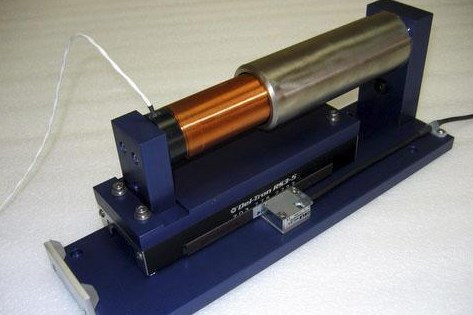 Linear Induction Motor: Working Principle, Characteristics, and Applications
Linear Induction Motor: Working Principle, Characteristics, and Applications02 March 202112499
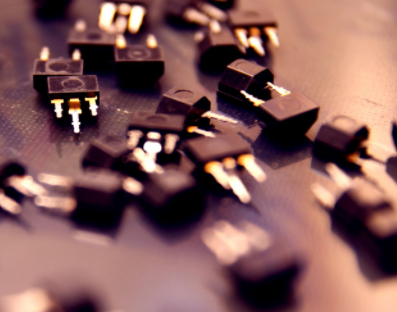 US Energy Department Funds Next-Gen Semiconductor Projects to Improve Power Grids
US Energy Department Funds Next-Gen Semiconductor Projects to Improve Power Grids09 December 20232272
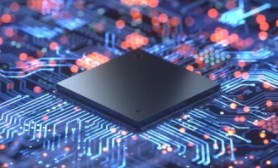 Introduction to VOC Sensor
Introduction to VOC Sensor22 October 20214839
STMicroelectronics
In Stock
United States
China
Canada
Japan
Russia
Germany
United Kingdom
Singapore
Italy
Hong Kong(China)
Taiwan(China)
France
Korea
Mexico
Netherlands
Malaysia
Austria
Spain
Switzerland
Poland
Thailand
Vietnam
India
United Arab Emirates
Afghanistan
Åland Islands
Albania
Algeria
American Samoa
Andorra
Angola
Anguilla
Antigua & Barbuda
Argentina
Armenia
Aruba
Australia
Azerbaijan
Bahamas
Bahrain
Bangladesh
Barbados
Belarus
Belgium
Belize
Benin
Bermuda
Bhutan
Bolivia
Bonaire, Sint Eustatius and Saba
Bosnia & Herzegovina
Botswana
Brazil
British Indian Ocean Territory
British Virgin Islands
Brunei
Bulgaria
Burkina Faso
Burundi
Cabo Verde
Cambodia
Cameroon
Cayman Islands
Central African Republic
Chad
Chile
Christmas Island
Cocos (Keeling) Islands
Colombia
Comoros
Congo
Congo (DRC)
Cook Islands
Costa Rica
Côte d’Ivoire
Croatia
Cuba
Curaçao
Cyprus
Czechia
Denmark
Djibouti
Dominica
Dominican Republic
Ecuador
Egypt
El Salvador
Equatorial Guinea
Eritrea
Estonia
Eswatini
Ethiopia
Falkland Islands
Faroe Islands
Fiji
Finland
French Guiana
French Polynesia
Gabon
Gambia
Georgia
Ghana
Gibraltar
Greece
Greenland
Grenada
Guadeloupe
Guam
Guatemala
Guernsey
Guinea
Guinea-Bissau
Guyana
Haiti
Honduras
Hungary
Iceland
Indonesia
Iran
Iraq
Ireland
Isle of Man
Israel
Jamaica
Jersey
Jordan
Kazakhstan
Kenya
Kiribati
Kosovo
Kuwait
Kyrgyzstan
Laos
Latvia
Lebanon
Lesotho
Liberia
Libya
Liechtenstein
Lithuania
Luxembourg
Macao(China)
Madagascar
Malawi
Maldives
Mali
Malta
Marshall Islands
Martinique
Mauritania
Mauritius
Mayotte
Micronesia
Moldova
Monaco
Mongolia
Montenegro
Montserrat
Morocco
Mozambique
Myanmar
Namibia
Nauru
Nepal
New Caledonia
New Zealand
Nicaragua
Niger
Nigeria
Niue
Norfolk Island
North Korea
North Macedonia
Northern Mariana Islands
Norway
Oman
Pakistan
Palau
Palestinian Authority
Panama
Papua New Guinea
Paraguay
Peru
Philippines
Pitcairn Islands
Portugal
Puerto Rico
Qatar
Réunion
Romania
Rwanda
Samoa
San Marino
São Tomé & Príncipe
Saudi Arabia
Senegal
Serbia
Seychelles
Sierra Leone
Sint Maarten
Slovakia
Slovenia
Solomon Islands
Somalia
South Africa
South Sudan
Sri Lanka
St Helena, Ascension, Tristan da Cunha
St. Barthélemy
St. Kitts & Nevis
St. Lucia
St. Martin
St. Pierre & Miquelon
St. Vincent & Grenadines
Sudan
Suriname
Svalbard & Jan Mayen
Sweden
Syria
Tajikistan
Tanzania
Timor-Leste
Togo
Tokelau
Tonga
Trinidad & Tobago
Tunisia
Turkey
Turkmenistan
Turks & Caicos Islands
Tuvalu
U.S. Outlying Islands
U.S. Virgin Islands
Uganda
Ukraine
Uruguay
Uzbekistan
Vanuatu
Vatican City
Venezuela
Wallis & Futuna
Yemen
Zambia
Zimbabwe




















